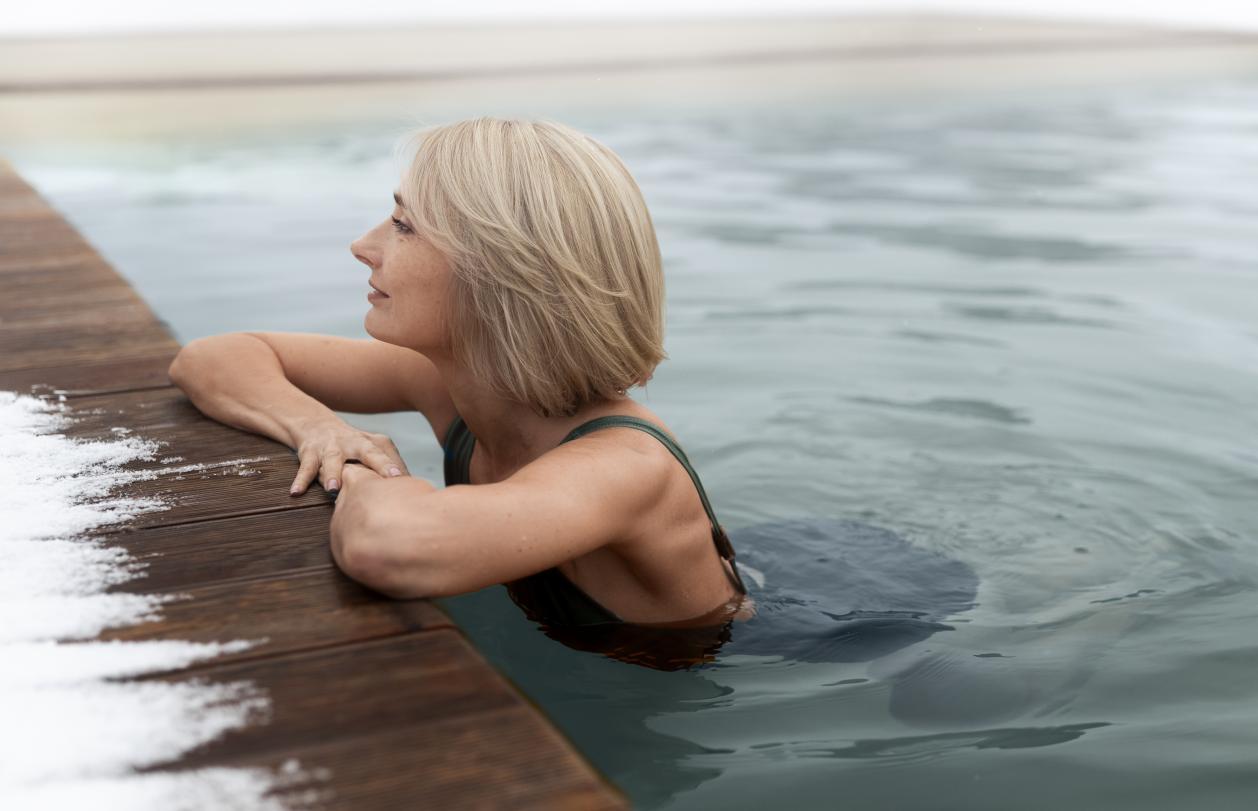
Cold plunge therapy has emerged as a game-changer for muscle recovery and soreness reduction. At Merse Wellness, we understand the significance of effective recovery techniques, and cold plunges offer a refreshing and scientifically supported approach to post-exercise rejuvenation. This therapy not only helps reduce inflammation and soreness but also enhances overall recovery, enabling you to return to peak performance more swiftly.
Table of Contents
ToggleCold plunge therapy, often referred to as cold water immersion, involves submerging the body or specific body parts in cold water. This technique has been lauded for its numerous benefits in muscle recovery, making it a popular choice among athletes and fitness enthusiasts. The cold temperature triggers physiological responses that aid in reducing muscle soreness and speeding up recovery times, thereby enhancing overall performance and well-being.
Cold plunge therapy speeds up the healing process and reduces inflammation in the muscles, facilitating their recuperation. By immersing the body in cold water, it helps to minimise soreness and enhance overall muscle healing, allowing for quicker and more effective recovery.
Immersing the body in cold water constricts blood vessels, reducing blood flow to the affected muscles. This decrease in circulation helps minimise inflammation and swelling, which are common after intense exercise. By controlling these inflammatory responses, cold plunge therapy supports a more comfortable and efficient recovery.
Natural painkillers called endorphins are released while submerged in cold water. These endorphins can assist in the repair process of muscle fibres, leading to faster recovery. This enhancement in muscle repair helps athletes return to their training regimen with reduced downtime.
Cold plunges can help alleviate delayed onset muscle soreness (DOMS) by reducing muscle damage and metabolic waste products that contribute to soreness. This reduction in muscle damage aids in a quicker return to comfortable and effective physical activity.
Blood arteries widen when they exit the chilly water, increasing blood flow. This process helps flush out toxins and provides essential nutrients to the muscles, aiding in quicker recovery. Enhanced circulation also supports overall muscle health and readiness for subsequent activities.
Cold plunge therapy offers a compelling approach to muscle recovery, effectively reducing inflammation, accelerating muscle repair, and alleviating soreness. By enhancing circulation and flushing out metabolic waste, this technique supports a quicker and more comfortable recovery process. At Merse Wellness, we’re dedicated to supporting you in reaching your fitness objectives and optimising your recuperation techniques. Please contact us for more information and individualised guidance on how cold plunge therapy can enhance your regimen. Our goal is to assist you on your path to optimal health and performance.
Aim for 10 to 15 minutes in cold water, with the temperature ranging from 10-15°C. This duration helps maximise benefits without risking adverse effects.
It is generally recommended to use cold plunge therapy 2-3 times per week, depending on the intensity of your exercise routine and individual recovery needs.
Yes, it can aid in reducing inflammation and swelling, which can be beneficial for injury recovery. For individualised guidance, speak with a healthcare provider.
Long-term exposure to cold water can cause hypothermia, however this is uncommon. Never stay in the chilly plunge for longer than necessary, and keep an eye on the time.
Absolutely. Cold plunge therapy can be effectively combined with other recovery techniques like stretching, foam rolling, and proper nutrition for comprehensive muscle recovery.